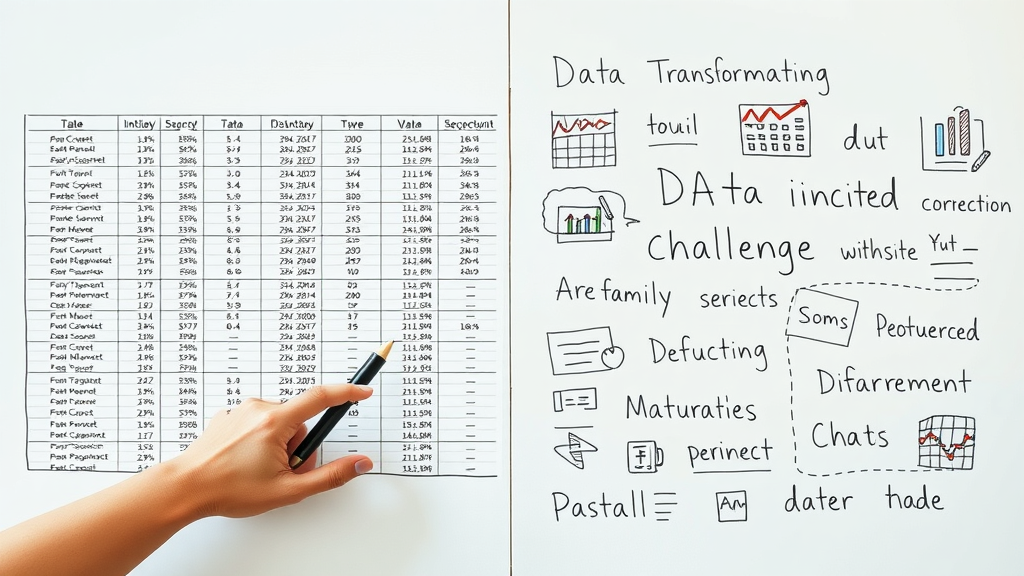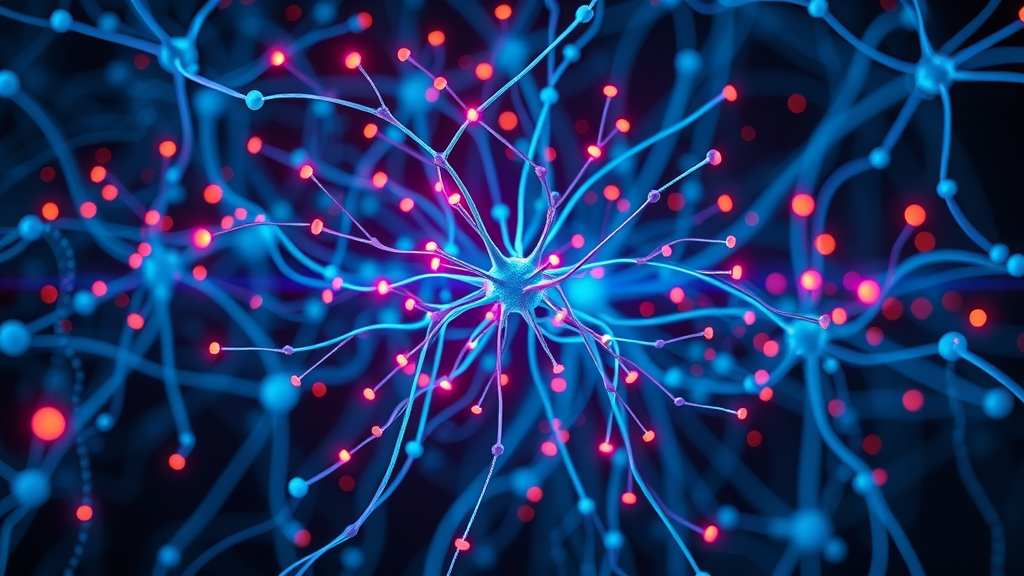Did you know that over 80% of the world’s data is unstructured—and natural language processing is the key to unlocking its hidden value? Natural language processing (NLP) empowers our digital world to truly understand and respond to human language. Whether you ask your phone a question, receive an automatic translation, or analyze thousands of social media posts, NLP makes it all possible. Read on to see how NLP is powering tomorrow’s smartest AI innovations, and why you shouldn’t miss this technology.
Revealing the Power of Natural Language Processing: How It’s Transforming Human Language Understanding
Natural language processing sits at the heart of modern language processing , bridging the complex gap between messy, unstructured human expressions and precise, actionable digital intelligence. The surge in NLP applications —from chatbots that converse like people, to search engines understanding the intent behind your words—demonstrates just how dramatically NLP is transforming daily interactions.
For example, customer support chatbots now resolve complex questions thanks to advanced nlp tasks and language understanding techniques, while predictive text and smart replies in messaging apps speed up communication by learning our patterns. Businesses are leveraging sentiment analysis to interpret the emotional tone in social media conversations and reviews, gaining insights that were previously impossible at scale.
As artificial intelligence continues its rapid growth, natural language processing enables machines to comprehend context, tone, and intent, transforming vast amounts of text data into organized, actionable insights. This evolving technology is not just decoding what we write or say, but understanding the very nature of conversation itself.

Natural Language Processing Explained: Foundations, Evolution, and Core Concepts
To fully appreciate natural language processing , it’s important to understand its place in the evolution of artificial intelligence and computer science . In its earliest days, computers only understood highly structured data—numbers, tables, and precise commands. Human language, with its ambiguity, slang, and context, posed a formidable challenge.
Enter natural language processing, which combines linguistic rules with statistical models to decode and interpret human language . Over the years, NLP has advanced from rule-based systems to powerful deep learning approaches. Today’s NLP models harness large-scale neural networks and massive data sets to deliver breakthroughs in language understanding, text generation, and machine translation.
At its core, NLP aims to bridge the gap between how we communicate naturally and how computers interpret information. Techniques such as tokenization, stemming, and part-of-speech tagging have set the foundation for tasks like machine translation, sentiment analysis, and even creative language generation in AI content.
What You’ll Achieve by Mastering Natural Language Processing
- Understand how NLP works in artificial intelligence
- Identify leading NLP techniques and neural networks
- Develop use cases for NLP applications in varied industries
- Evaluate NLP tasks such as speech recognition and machine translation
The Pillars of Natural Language Processing: From Structured Data to Deep Learning
Structured Data vs. Unstructured Human Language in NLP
The challenge of natural language processing often begins with the stark difference between structured data and the open complexity of human language . In computers, structured data takes the form of clear, labeled tables, databases, or spreadsheets, where every piece of information has a strict place and meaning. Conversely, natural language—whether in emails, chat conversations, or social media posts —is inherently unstructured, rife with slang, abbreviations, and changing context.
NLP systems must learn to interpret this chaotic flow, extracting meaning and intention from conversations that don’t follow rigid rules. By leveraging machine learning and language models , NLP transforms scattered text data into structured information. This conversion enables applications like search engine queries, real-time translations, and automatic content summarization.
Ultimately, the capacity to seamlessly shift between structured and unstructured data is what empowers NLP to drive innovation in countless fields, from finance to healthcare to entertainment.

Role of Deep Learning and Neural Networks in Natural Language Processing
The rise of deep learning and neural networks has utterly recalibrated what’s possible in natural language processing . Traditional rule-based models struggled with the complexity of human communication, but deep learning models excel by finding hidden patterns in dense, messy data.
Modern nlp models like BERT and GPT leverage vast neural architectures to learn grammar, tone, and even intent, surpassing the limitations of older language processing systems. This heralds a new era where AIs can write persuasive articles, seamlessly translate multiple languages, or analyze millions of social media opinions in real-time.
With deep learning , natural language processing is now able to leap beyond programmed rules—adapting, learning, and even generating entirely new ways to communicate based on continuous input.
Essential NLP Techniques and Algorithms in Language Processing
Key NLP Techniques: Tokenization, Stemming, Lemmatization
- Introduction to fundamental nlp techniques for language modeling
- Examples of how nlp techniques structure language data for processing
Some key nlp techniques serve as building blocks for all modern language processing tasks. Tokenization breaks text into manageable chunks (words, phrases, or sentences), helping computers identify the components that matter. Stemming and lemmatization reduce words to their most basic form, ensuring that machines can recognize “runs,” “running,” and “ran” as variants of “run.”
These techniques are critical for tasks like search engine matching, text data analysis, and even in training language models used in chatbots or virtual assistants. By systematically processing language, NLP systems create a bridge between the unpredictable nature of human writing and the logical demands of machines.
As you explore or build nlp applications , mastering these core techniques helps transform unorganized language into actionable insights, making your AI smarter and more responsive.

Natural Language Generation and Understanding
Beyond analyzing existing content, modern natural language processing offers machines the ability to generate authentic language—known as natural language generation . This innovation allows AI to draft emails, summarize articles, and even create poetry or fiction that mimics a specific style.
On the flip side, natural language understanding helps computers decode the intention and emotional tone behind written or spoken communication. Advanced nlp models excel at revealing whether a review is positive, identifying customer requests, or extracting answers from vast databases of text.
Together, these twin pillars of language generation and understanding have redefined the possibilities of AI-powered communication, creating more natural interactions between humans and machines in everyday life.
Applications of Natural Language Processing in Today's World
Search Engine Optimization and NLP
Natural language processing fundamentally reshapes how search engines deliver results. Instead of relying solely on keyword matching, advanced NLP algorithms parse user questions in context, interpreting intent, and providing richer, more accurate answers.
For businesses, mastering NLP in search engine optimization means content that ranks higher, resonates with intent, and attracts the right audiences. Technologies like Google’s BERT leverage deep language understanding to match user queries with the most relevant information—making NLP an essential tool in the modern marketing playbook.
Ultimately, harnessing nlp techniques for SEO transforms static web pages into dynamic resources that genuinely connect with how people search, speak, and think.
Sentiment Analysis for Business Intelligence
With billions of social media posts generated daily, businesses use sentiment analysis —a core nlp application —to monitor and analyze public opinion in real time. By evaluating whether feedback is positive, negative, or neutral, companies can adapt marketing strategies, address customer concerns, and detect emerging trends before they hit mainstream headlines.
Sentiment analysis also plays a major role in politics, finance, and entertainment, interpreting media posts and news articles to gauge public response. Thanks to advances in deep learning , these tools can now grasp nuances and sarcasm that used to perplex traditional systems.
By leveraging NLP-powered sentiment analysis, organizations unlock a powerful window into the collective mood, driving smarter decisions across every industry.

Speech Recognition and Machine Translation
Voice-controlled assistants like Siri, Alexa, and Google Assistant rely on speech recognition —an NLP-powered marvel that converts spoken language into actionable text. These nlp applications have dramatically improved thanks to advanced neural networks, turning whispered commands or noisy audio into crystal-clear instructions.
In a hyper-connected world, machine translation tools such as Google Translate or DeepL break down language barriers by instantly translating conversations, documents, and websites. Behind the scenes, transformers and deep learning architectures fuel these breakthroughs, allowing brain-like learning models to understand slang, context, and culture.
Whether you’re traveling abroad or collaborating internationally, NLP makes communication across languages seamless, fast, and personal.

Natural Language Applications in Healthcare and Finance
The power of natural language processing extends well beyond tech and marketing. In healthcare, NLP algorithms extract vital information from unstructured text data —such as doctor’s notes, exam transcripts, and research articles—enabling better diagnoses, predictive analytics, and personalized care.
In finance, NLP-powered systems scan earnings reports, news feeds, and social media for clues about market sentiment and investment risks. By converting vast swathes of text data into structured intelligence, banks and traders gain competitive advantages and improved compliance monitoring.
These solutions, built atop advanced language models and deep learning , are revolutionizing both industries—delivering faster, smarter, and safer decisions in high-stakes environments.
Watch this brief video overview to see the fundamentals of natural language processing, from basic language parsing to advanced neural networks powering modern AI.
Real-World Examples Showcasing Natural Language Processing
- Voice assistants (Alexa, Siri, Google Assistant)
- Real-time language translation (Google Translate, DeepL)
- Automatic text summarization tools
- Sentiment analysis software for brands
- Legal contract analytics in law firms

This in-depth video explores leading NLP techniques, the evolution from classical to deep learning models, and real-life case studies demonstrating the power of language processing and neural networks.
Natural Language Processing and Deep Learning: What Makes Language Models Smart?
The Impact of Neural Networks on Language Processing
The transformative abilities of neural networks in natural language processing cannot be overstated. Early NLP models relied on hand-coded rules—but today, advanced deep learning algorithms enable machines to grasp the subtlety and depth of human language .
Neural networks excel at finding relationships in vast volumes of data, identifying context, tone, and the underlying intent of a message. This leap forward means AI can not only interpret what’s written, but why it’s said, making it invaluable for customer support, legal analytics, and even creative writing.
The development of transformer-based architectures—such as BERT and GPT—has pushed language models to new heights, enabling collaboration between AI and users that feels authentic, intuitive, and seamless.

Comparing Classical and Deep Learning NLP Techniques
- Traditional rule-based language processing vs. deep neural approaches
- Advantages of deep learning for complex human language understanding
In the past, most nlp techniques were grounded in explicit rules—match this pattern, flag that phrase. These early methods, while effective for simple repetitive nlp tasks , struggled with exceptions and language’s fluid nature. Enter today’s deep learning NLP: by training on massive datasets, machine learning models discover nuance, sentiment, and meaning amid linguistic chaos.
Deep networks automatically learn context and relationships, making them resilient against slang, synonyms, and the quirks of human language . This marks a dramatic evolution in language understanding, enabling everything from auto-summarization tools to accurate virtual assistants and smarter search engines.
The shift from rule-based nlp techniques to adaptable deep learning approaches equips AI to thrive in an ever-changing, globally connected world.
Why Natural Language Processing Powers the Future of Artificial Intelligence

Natural language processing is central to the promise of true artificial intelligence : technology that not only computes, but understands and communicates. By breaking down barriers between people and machines, NLP allows for intuitive interactions, more personalized digital experiences, and proactive problem solving in every sector.
As language continues to evolve and become more complex, only finely tuned NLP models leveraging the latest neural networks will keep pace—ensuring AI doesn’t just follow instructions, but anticipates needs and acts as a true partner in our daily lives.
Unlocking smarter AI begins with understanding, deploying, and continually refining natural language processing as the cornerstone of all modern machine learning systems.
Table: Common NLP Tasks and Applications
| NLP Task | Description | Common Applications |
|---|---|---|
| Speech Recognition | Converting spoken language to text | Virtual assistants, dictation |
| Sentiment Analysis | Detecting emotional tone | Brand monitoring, opinion mining |
| Machine Translation | Automatically translating languages | Travel, global business |
| Text Summarization | Condensing text information | Journalism, research |
| Language Generation | AI writing new text | Chatbots, creative AI content |
Quote: Leading Voices on Natural Language Processing
"Natural language processing is at the heart of the AI revolution, transforming the way machines understand and respond to human language." – Fei-Fei Li, Computer Scientist
Key Challenges in Natural Language Processing
- Ambiguity of human language and context
- Scaling deep learning models
- Bias in nlp data sets
- Real-time processing needs
Despite its dramatic advances, natural language processing still faces significant hurdles. The ambiguity and flexibility of human language can perplex even state-of-the-art models. As deep learning systems grow in size, scaling them requires immense data and computational resources, and addressing bias in NLP data sets becomes ever more critical for fairness and accuracy.
Additionally, the increasing demand for real-time processing—such as live translations or instant sentiment analysis—pushes researchers and engineers to develop faster, more efficient nlp models that remain both robust and reliable.
Tackling these challenges head-on will define the next era of NLP innovation and continue to shape how AI understands and interacts with humanity.
Latest Innovations and Trends in NLP and Language Processing
- Transformer language models (BERT, GPT, etc.)
- Real-time translation and transcription breakthroughs
- Integration of multimodal learning (text, audio, visual)
- Low-resource language support
Recent years have seen the explosion of transformer language models like BERT, GPT, and their successors. These architectures have blown past previous benchmarks, enabling both world-class translation and impressively human-like text generation. Real-time translation and transcription have grown increasingly accurate and accessible, thanks to advances in multimodal learning—which combines text, audio, and even images for deeper understanding.
Ongoing research focuses on supporting low-resource languages, removing barriers and ensuring everyone accesses the benefits of NLP regardless of their native tongue. These trends signal the dawn of language processing that’s faster, fairer, and more universal than ever before.
Keeping pace with these innovations is one of the surest ways to stay ahead in the rapidly evolving world of AI and natural language technology.
Take a glimpse into the future of NLP—where machines understand not just our words, but our meaning, culture, and emotions. Visionary researchers and technologists reveal what’s coming next in language processing and artificial intelligence.
People Also Ask: Is ChatGPT an NLP?
Yes, ChatGPT is a product of natural language processing. It’s built on advanced language models that leverage deep learning and neural networks to understand, generate, and respond to human language . ChatGPT’s abilities—such as answering questions, drafting emails, and summarizing text—are all powered by cutting-edge NLP techniques.
People Also Ask: What is NLP with an Example?
NLP, or natural language processing , refers to the field in artificial intelligence that focuses on how computers understand and interact with human language. A popular example is a virtual assistant like Siri, which interprets spoken questions and provides helpful answers, using both speech recognition and language understanding to interact naturally.
People Also Ask: What are the Four Types of NLP?
The four main types of natural language processing generally refer to core tasks: natural language understanding (interpreting text meaning), natural language generation (creating new text), speech recognition (converting spoken language to text), and machine translation (translating between languages). Each tackles a unique challenge in making human-computer communication seamless.
People Also Ask: Why Is NLP So Powerful?
NLP is powerful because it allows computers to bridge the vast gap between structured programming logic and the nuanced, highly variable forms of human language. It transforms raw, unstructured language data into actionable intelligence, making interactions with technology more natural, intuitive, and productive across countless domains.
Frequently Asked Questions About Natural Language Processing
-
How does deep learning enhance NLP?
Deep learning enables NLP models to automatically learn complex relationships, nuances, and context within large sets of language data, making tasks like language generation and understanding far more accurate and flexible than traditional rule-based approaches. -
What industries benefit most from NLP applications?
Major sectors include technology, financial services, healthcare, law, marketing, and customer support. NLP powers virtual assistants, automates customer insights, streamlines medical data review, and more. -
What are the limitations of current NLP models?
Modern NLP struggles with ambiguity, sarcasm, and cultural context. Bias in data, the need for vast computational resources, and difficulties with low-resource languages also present persistent challenges. -
How is data privacy managed in NLP tasks?
Responsible NLP development uses anonymization, encryption, and strict data governance to protect user information and comply with privacy regulations, especially when processing sensitive communications or personal data.
Next Steps: Embrace Natural Language Processing for Smarter Artificial Intelligence
- Explore hands-on tutorials on leading nlp techniques
- Integrate AI-powered language processing in your projects
- Stay updated with the latest in neural networks and language models
Summary: Why Natural Language Processing is Essential for AI Innovation
With natural language processing, AI becomes collaborative, adaptive, and truly intelligent—transforming how we live, work, and connect. Start leveraging NLP to unlock potential in your data and empower your technology today.
 Add Row
Add Row  Add
Add 




Write A Comment